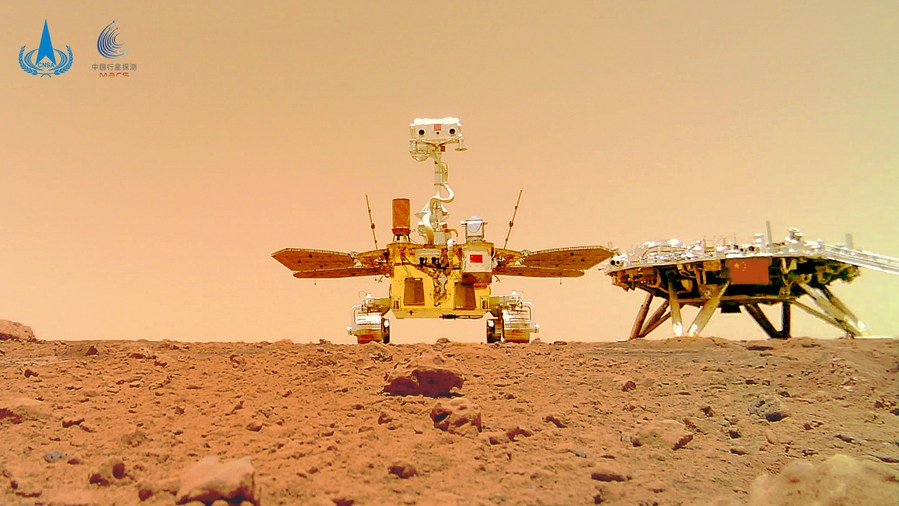Mars rover enters dormancy period
By ZHAO LEI | CHINA DAILY | Updated: 2022-05-23 09:29

China's Mars rover Zhurong has entered a dormancy period and is expected to resume operations toward the end of the year, according to the China National Space Administration.
The administration said on Friday that after analyzing images obtained by the Tianwen 1 orbiter that travels around Mars and the data of Zhurong's solar arrays, scientists concluded that strong sandstorms have recently begun to hit the region the rover has been in since its landing.
In addition, the mission site has entered winter, with freezing temperatures ranging from-20 C to-100 C. Temperatures will continue falling until mid-July.
"To respond to the low power generation caused by the sandstorms and the extremely low temperatures, Zhurong suspended its operations on Wednesday in accordance with mission plans. It is expected to be reactivated around December, when its working region enters spring and conditions become favorable," the administration said in a release.
It noted that Tianwen 1 will continue orbiting the Red Planet to carry out remote-sensing surveys, and mission controllers will use the craft to monitor weather and other conditions.
Named after an ancient Chinese poem, Tianwen 1 was launched on July 23, 2020, becoming the nation's first independent interplanetary exploration endeavor.
The spacecraft stack traveled more than 470 million kilometers and carried out several trajectory maneuvers before entering Martian orbit in February last year. The Zhurong rover touched down on the planet on May 15, 2021, and began to travel on Martian soil a week later.
Zhurong is tasked with surveying Mars' landforms, geological structures, soil characteristics, potential locations of water and ice, and atmospheric and environmental characteristics, as well as magnetic and other physical fields.
The 1.85-meter-tall, 240-kilogram robot has traveled nearly 2,000 meters and has obtained a great deal of scientific data.
A recent finding by Chinese scientists based on data obtained by Zhurong has attracted attention from researchers around the world.
Researchers at the National Space Science Center of the Chinese Academy of Sciences said after analyzing shortwave infrared spectral data obtained by the rover, they have identified hydrated sulfate/silica materials on the Amazonian terrain at Zhurong's landing site.
Liu Yang, a scientist at the center, explained that their findings indicate that "there is likely to be a large amount of usable water in hydrous minerals around the landing site of Zhurong as well as the vast areas in Mars' northern lowlands. That resource can be used in manned explorations on Mars in the future".
























